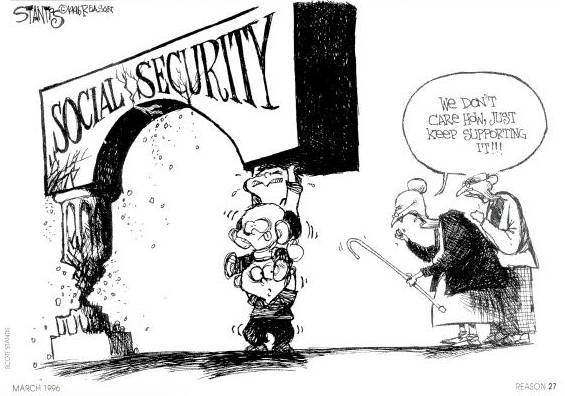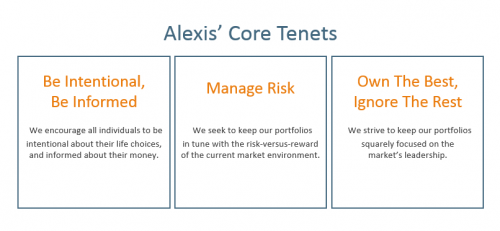Something had to be done. Most knew that Social Security in its current state was likely unsustainable. However, few were expecting the changes to occur “right now,” and even fewer were expecting the changes to occur “right now,” and even fewer were expecting the new laws to have such a substantial impact on those so close to collecting benefits. And still fewer were expecting the repercussions the legislation may have on those divorced.
——————————————————————————-
Click to access: 2015 Year End Checklist
——————————————————————————
On November 2, President Obama signed the Bipartisan Budget Act of 2015 into law. This “surprise” legislation resulted in killing two effective strategies for maximizing Social Security benefits – File & Suspend and Restricted Application.
For years, these two provisions have allowed individuals to collect thousands of extra dollars in benefits. Within the next few months, many aspects of these provisions will be eliminated or significantly altered. The reasons for the changes are obvious – these benefits are placing additional burden on a system that is already stretched due to extended life expectancy. Unfortunately, the upshot of this legislation is that many may be significantly affected by these changes. Those who are already receiving benefits are unaffected. Fortunately the new rules do not take effect until April 29, 2016, providing those within certain age parameters the opportunity to leverage these strategies before the crackdown.
With the help of Michael Kitces, I have done my best to summarize what is very complex legislation.
File & Suspend
- Then: File & Suspend was a boon to couples who had one high-income earner and one who stayed at home or had substantially lower income, and as a result, a lower Social Security benefit. Upon reaching FRA (FRA = Full Retirement Age = age 66 for those born 1954 or before), the high-income earner could file for Social Security and immediately suspend the benefit. Why do this? Because by filing for the benefit, the high-income earner’s spouse would be eligible to claim the spousal benefit – 50% of the high-income earner’s benefit. Meanwhile, given the high-income earner suspended his/her benefit, the benefit could grow by 8% per year until age 70, when s/he would lift the suspension. Getting a guaranteed 8% increase in one’s benefit per year, particularly in today’s low interest rate environment, was amazing.
- Now: As of April 29, 2016, this benefit will no longer be available. If the primary income earner were to File & Suspend his/her benefit, s/he would suspend the spousal benefit as well.
- Opportunity: If you haven’t claimed your benefit, and were born prior to April 30, 1950, you can still File & Suspend until the deadline of April 29, 2016. This will enable your spouse to receive 50% of your benefit, while increasing your benefit by 8% per year until age 70.
Restricted Application
- Then: Restricted Application was a strategy available to dual-income married couples. While File & Suspend was focused on the low/no-income earner receiving the spousal benefit on the high-income earner, Restricted Application was about tapping your spouse’s benefit, while delaying your own retirement benefit to allow for the 8% per year growth.
- Now: When either member files for his/her benefit, s/he is deemed to have filed for both members. Similar to the current rules, when one member applies, the couple receives whichever provides the larger benefit. In other words, there will no longer be such a thing as applying for just one benefit, and switching to the others’ at a later date.
- Opportunity: The deadline for filing a Restricted Application is different from File & Suspend. If you were born prior to or in 1953 (or, per the legislation, on January 1, 1954), and are not already receiving spousal benefits but plan to file a Restricted Application in the future, you can still do so – even if your filing for restricted benefits doesn’t happen until 2019, when today’s 62 year-olds finally reach Full Retirement Age.
- Note: To file a Restricted Application your spouse must have filed for benefits. Because of this, File & Suspend and Restricted Application are often used in conjunction.
“Strong Medicine” for Those Divorced
While the Social Security changes apply both divorced men and women (see below), they are potentially particularly tough for divorced women.
Many women’s Social Security benefits are impacted by the following:
- Lower Pay: In spite of progress towards equal pay, women still tend to earn less than men – though it used to be worse, Sheryl Sandberg, author of Lean In, states that “American women earn $0.77 for every dollar” made by men.*
- Time Out of the Workforce: Additionally, women spend significantly more time out of the workforce than men, primarily due to caring for children or aging parents. Sandberg states that “43% of highly qualified women with children are leaving careers…for a period of time.”*
Again, the changes outlined below apply to all those divorced. However, for women, this can mean a triple-whammy: lower wages and more time out of the workforce already likely mean lower Social Security benefits; with this recent legislation, benefits are not only lower, but more restrictive.
File & Suspend for Those Divorced
- Then: In the case of a divorced spouse, File & Suspend was not relevant since the divorced spouse was eligible for full spousal benefits at Full Retirement Age as long as his/her ex-spouse was at least 62.
- Now: If the primary earner Files & Suspends at Full Retirement Age, the way the law is currently written, this action will not only suspend the primary earner’s benefit, but also his/her ex-spouses until the primary earner turns 70. While Congress may not have intentionally written to effect such a change, the new law offers a strategy to primary earners who want to be vindictive towards an ex-spouse.
- Opportunity: This was most certainly not the intended outcome for this component of the legislation. Hopefully, Congress will revisit and/or amend this legislation as soon as possible to prevent such an undesirable outcome.
Restricted Application for Those Divorced
- Then: Restricted Application was an effective strategy for delaying in order to maximize one’s own benefits, while obtaining some (ex-spouse) benefits along the way.
- Now: Restricted Application is still available, but only to for those born prior to 1953 (or January 1, 1954) who are grandfathered under the budget legislation. For those born prior to 1953 (or January 1, 1954) and planning to claim spousal benefits in the future, the option to claim spousal benefits at Full Retirement Age and delay and maximize your benefits is still available. For those born January 2, 1954 or later, the “claim one and switch” strategy will no longer be available. Instead, a qualifying divorcee must file and claim whichever is higher (your own or your ex-spouse’s benefit), or wait as long as possible to file for your own benefit, allowing it to grow.
These rules and rule changes are complex. For full details, feel free to reach out. Or, if you really want to dig into the details, the above is a synopsis of Michael Kitces’ article Navigating the Effective Deadlines for the New File & Suspend and Restricted Application Rules.
——————————————————————————-
Click to access: 2015 Year End Checklist
——————————————————————————
Wishing you all a lovely holiday season.
Roberta
* Lean In, Sheryl Sandberg
Alexis Advisors, LLC is a Registered Investment Advisor with the Commonwealth of Virginia. Information contained herein is for informational purposes only and is subject to various interpretations and timeframes, and should not be considered investment advice. Please contact Advisor promptly if there are any changes in your financial situation or investment objectives, or if you wish to impose, add or modify any reasonable restrictions to the management of your account. Since the confidentiality of internet email cannot be guaranteed, do not include private or confidential information such as passwords, account numbers, or social security numbers. Additionally, instructions having financial consequences such as trade orders, fund transfers, etc. should not be included in your email communications, as we cannot act on unconfirmed instructions received via email. Nothing in this transmission should be construed as an offer or solicitation to purchase or sell securities. Investments in securities and insurance products are not FDIC insured, not bank guaranteed, and may lose value. Advisor’s current Disclosure Brochure is set forth on Form ADV Part 2 and is available for your review upon request.


